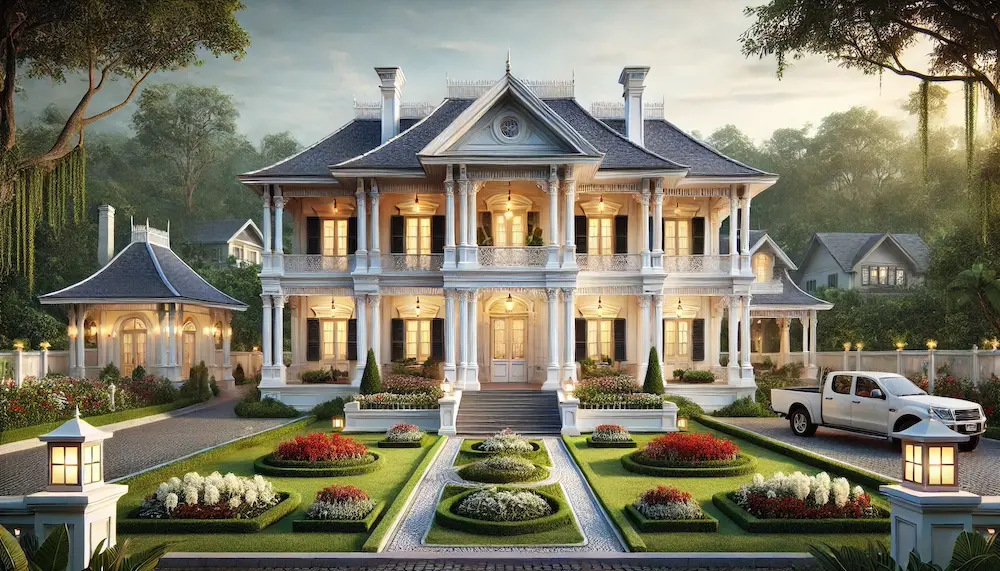Colonial villas are residences that blend architectural elements from colonial periods with local influences, resulting in distinctive and historically rich designs. This article explores the concept of colonial villas, their historical development, defining features, applications, and key considerations for prospective homeowners.
Introduction to Colonial Villas
A colonial villa reflects the architectural styles introduced by European colonizers between the 16th and 19th centuries. These structures often combine European design principles with local materials and construction techniques, creating unique hybrids that adapt to regional climates and cultures.
History and Origins of Colonial Villas
Colonial architecture emerged as European powers established colonies worldwide, bringing their building traditions to new territories. Settlers adapted their designs to local conditions, resulting in a fusion of styles. For instance, Dutch settlers in Indonesia developed the ‘Indies Style,’ blending Dutch architectural elements with Indonesian features to suit the tropical climate.
Key Features of Colonial Villas
Colonial villas exhibit several distinctive characteristics:
- Symmetry and Proportion: Many colonial designs emphasize balanced facades and harmonious proportions, reflecting European architectural principles.
- Verandas and Porches: To adapt to warmer climates, colonial villas often feature expansive verandas or porches, providing shade and outdoor living spaces.
- Local Materials: The use of indigenous materials, such as wood, stone, or adobe, was common, allowing structures to blend with their surroundings and utilize available resources.
- High Ceilings and Large Windows: Designed to enhance ventilation and keep interiors cool, these features are prevalent in colonial villas situated in tropical regions.
Applications of Colonial Villas
Colonial villas serve various purposes, including:
- Private Residences: Offering homeowners a blend of historical charm and functional living spaces.
- Boutique Hotels: Providing guests with an immersive experience in historically inspired accommodations.
- Cultural Centers: Serving as venues that showcase the architectural heritage and history of a region.
Considerations When Choosing a Colonial Villa
When selecting or restoring a colonial villa, consider the following:
- Historical Preservation: Ensure that renovations respect the original architectural elements and historical significance of the property.
- Climate Adaptation: Recognize that colonial villas were often designed with specific climatic considerations, which may influence their suitability and comfort in different environments.
- Maintenance: Be prepared for the upkeep associated with older structures, including potential restoration of traditional materials and features.
- Cultural Sensitivity: Acknowledge the historical context of colonial architecture, which may carry different cultural significances in various regions.
Conclusion
Colonial villas offer a unique blend of historical architecture and regional adaptations, resulting in residences rich in character and cultural significance. Understanding their key features and considerations is essential for those looking to invest in or restore a colonial villa that reflects both historical authenticity and contemporary living needs.
